Join 6200+ readers of my free weekly newsletter to learn how you can get paid to write about your interests online.
Here’s how to get ahead of 99% in 90 days with Lion Mode.
Everyone talks about Monk Mode, which is great and has its place, but Lion Mode is actually much more efficient and sustainable.
It helps you to achieve your goals faster by actually doing less.
Here's how it works:
Work like a lion. Sprint, rest, and reassess. Then attack again. You’re not a cow, grazing all day. You’re a lion, waiting, preparing, then going in for the kill.
– Naval
Lion Mode has 3 phases.
Plan. Hunt. Rest.
Most people waste time in the middle.
They're always half-working and half-resting.
They stay semi-stimulated, like grazing cows.
Always busy, but never fully on and never fully off.
Lions are different. They wait, strike with power, then rest deeply.
High performers do the same.
They switch between 100% and 0% — never 30%.
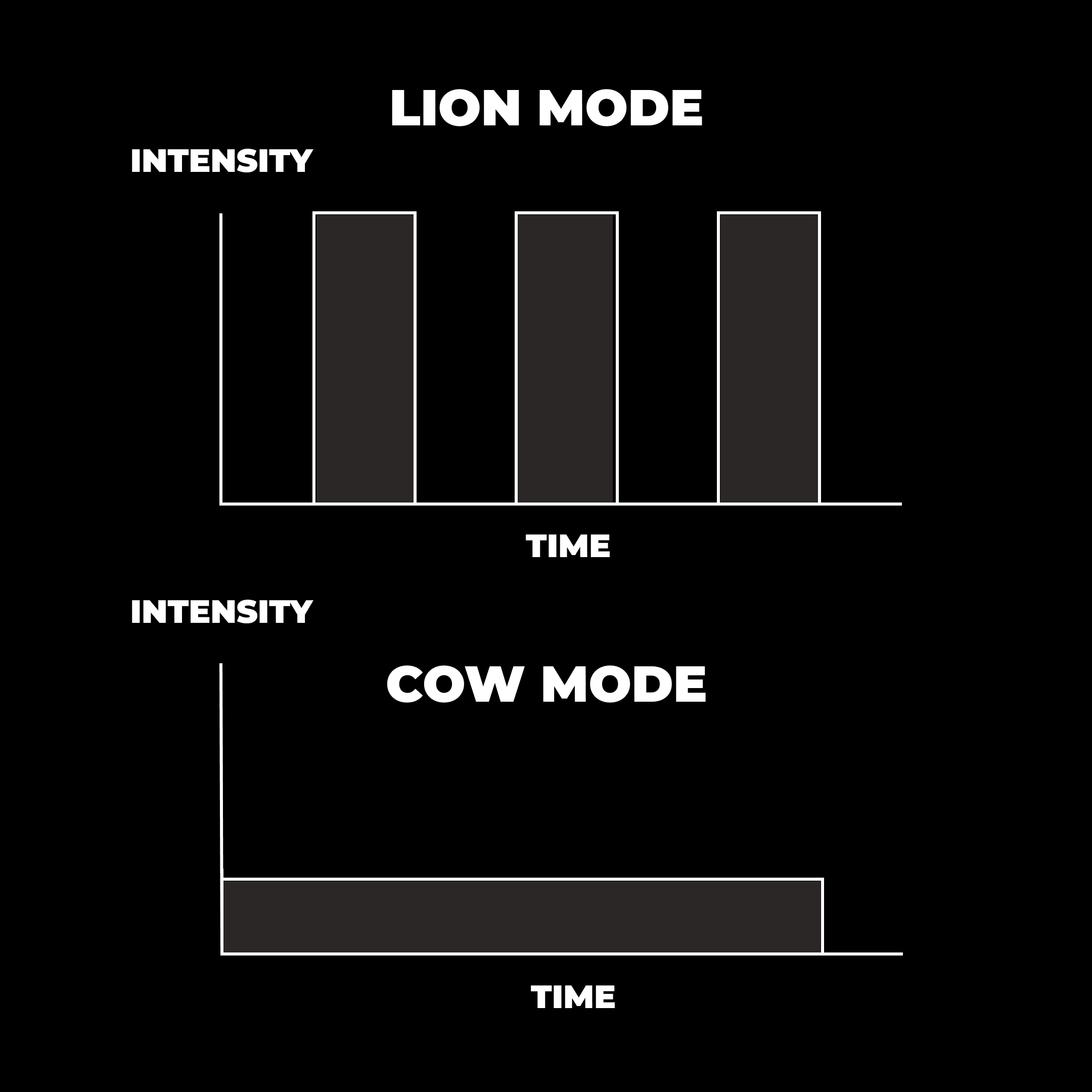
When they work, they really work.
When they rest, they actually rest.
This is what Lion Mode will help you to do.
It’s more like a lion hunting and less like a marathoner running. You sprint and then you rest. You reassess and then you try again. You end up building a marathon of sprints.
– Naval
And this is how you blow past the competition by actually working less.
To make it work, you must master all 3 phases.
Let’s start with the first one: the planning phase.
If one does not know to which port one is sailing, no wind is favorable.
– Seneca
Progress implies that you progress towards something.
Without a goal, there’s nothing to move toward.
It’s like running a race without a finish line.
You move without getting anywhere.
Humans need an aim to function. We’re literally built for it.
We’re the only primates with universally visible whites in our eyes. That’s because we’re aiming creatures.
We have evolved to cooperate toward shared goals, and it’s important that we can see what others are aiming at.
– Jordan Peterson
We need goals so we know what to focus on. Without them, we’re distracted.
Your goals literally change what you see.
Your goals become your filter for reality, shaping what you focus on and what you forget. Your brain helps you notice and remember information that helps achieve those goals.
– Dan Koe
Goals give you something to aim at.
And because you have something to aim at, you notice the things that will help you to achieve the goal.
Your brain literally filters the information that’s relevant for your goal.
That’s why two people can consume the same content and see different things.
If you have no fitness goals, a podcast on testosterone feels irrelevant.
But if you’re training to be a bodybuilder, it suddenly matters.
Your goals determine what you see as valuable.
They change the lens through which you view the world.
When you know what you’re looking for, the world becomes your library.
– Kobe Bryant
The world shifts itself around your aim.
Your goals change what you see, but they also change how you feel.
Progress makes us feels good.
Not because of achievement, but because of movement.
Almost all of the positive emotion that you will experience in your life will not be from attaining things but from seeing that things are working as you proceed towards a goal you value.
– Jordan Peterson
This is because when you move closer toward a goal, dopamine gets released.
And this dopamine makes you feel good.
Unlike what most people think, dopamine isn't the pleasure chemical.
Dopamine is not about the pursuit of happiness, it is about the happiness of pursuit.
– Dr. Robert Sapolsky
So it’s not about goal attainment — it’s about the pursuit.
If you don’t believe me, think back to when you graduated.
Each exam you passed felt great.
But when you finally got the degree, it probably felt empty.
When I finally got degree in criminology after 4 years of studying, they shook my hand, said "congratulations", gave me a piece of paper, and that was it.
It was extremely underwhelming and I didn’t feel anything.
That's because I already achieved the goal.
Dopamine is about wanting, not about having.
– Anna Lembke (Dopamine Nation)
Passing your final exam feels great — for a moment.
But then the game ends, and you need a new one.
Because dopamine comes from pursuing goals.
Dopamine is not the molecule of reward itself. It’s the molecule of motivation, craving, and pursuit.
– Andrew Huberman
So if we want to feel good and motivated, we need clear goals.
But not all goals are equal.
The more meaningful the goal, the stronger the motivation.
We get most of our positive emotions from seeing ourselves move closer toward a goal. The more meaningful the goal, the more motivated we’ll be.
– Jordan Peterson
The more valuable the goal, the stronger your motivation.
The best goal is the highest possible good you can currently imagine.
Jordan Peterson calls this “aiming at a star.”
In the movie Pinocchio, Geppetto wishes on a star for his puppet to become real.
That star represents the highest aim you can currently imagine.
You pick a star — the best thing you can imagine — and you aim at that. You won’t hit it, but you’ll move in that direction, and as you move, you’ll learn to see more clearly.
You’re not going to get it right when you start. But it doesn’t matter. Because what’s right for you now isn’t what’s right for you later. You aim, and as you move forward, you get wiser and you re-aim.
– Jordan Peterson
Don’t worry about picking the wrong star.
Because you will.
And that's actually a good thing.
Because here’s how progress really works:
You learn what's right for you through trial and error.
Don’t worry about getting this right in your first try.
If you’re anything like me, you’ll miss often — and that’s fine.
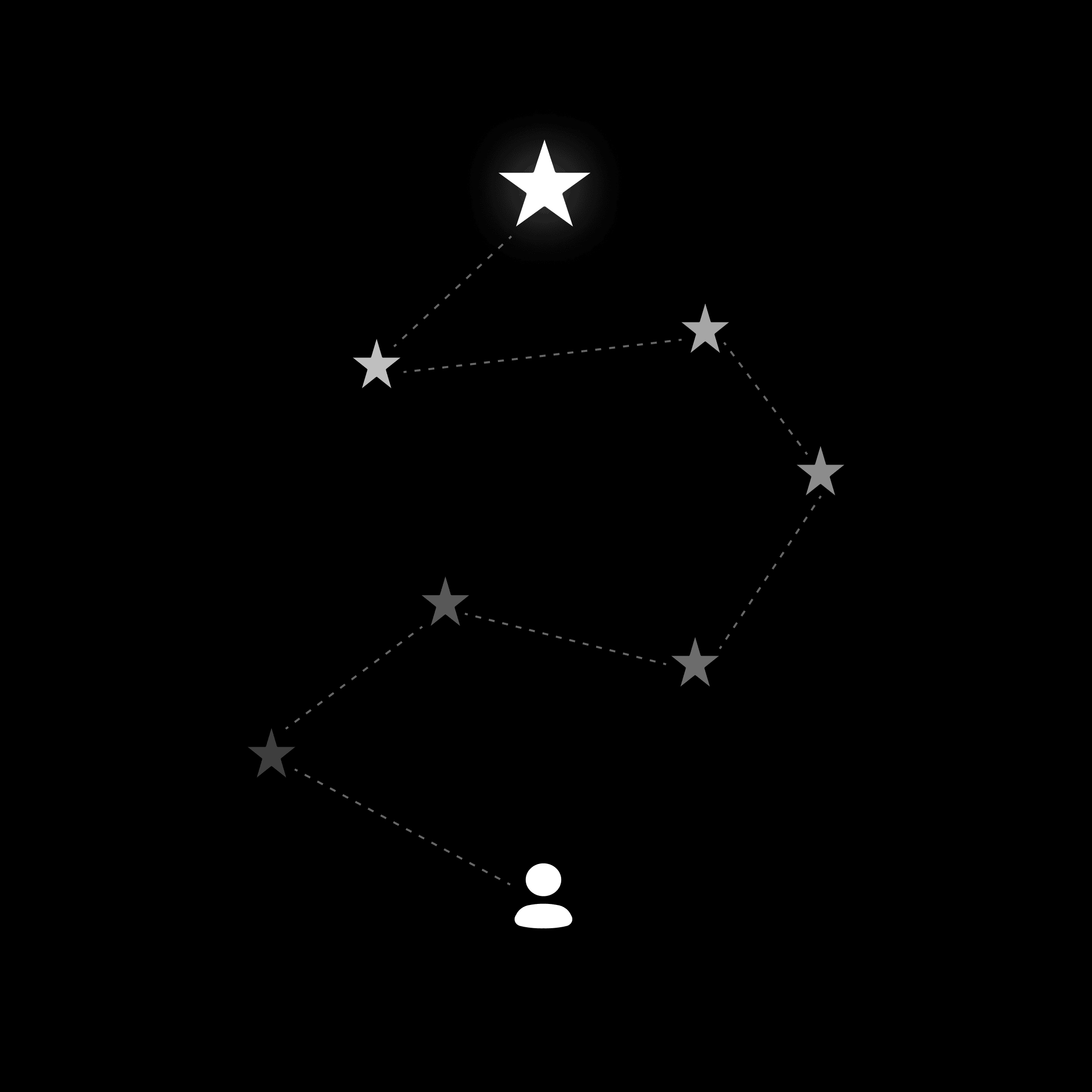
My 'stars' looked like this:
It can seem like a waste on time in hindsight, but each step mattered.
Each aim revealed the next.
I wouldn’t be here without those detours.
You can only connect the dots looking backward, you need to collect them first by moving forward.
You aim at what you can see, and as you move toward it, new things come into view that you couldn’t see before. Then you aim higher.
You might start with a foolish aim. But it’s by aiming that you learn to aim better. As you develop, the thing you’re aiming at transforms, because you transform.
You aim at something and as you move toward it, you get wiser. And as you get wiser, you see a better goal in the distance. So you reorient yourself toward that. And that’s how you progress.
– Jordan Peterson
It doesn’t matter if you don’t know where to start.
Just pick what you think is best and begin.
You have to shoot to see how far you’re off.
Take your best shot, pursue it, and refine as you go.
The more you aim, the better you aim.
And the better your goals become.
Another way to think about it is as Layers Of Purpose.
Instead of stars, he talks about Layers Of Purpose:
A man must align himself with his deepest purpose and then live it fully. Once that purpose has been lived, a deeper layer will be revealed. When a man is living one layer of his purpose completely, he will feel the next layer beginning to emerge.
– David Deida
To reach your core purpose, you must complete the outer layers first.
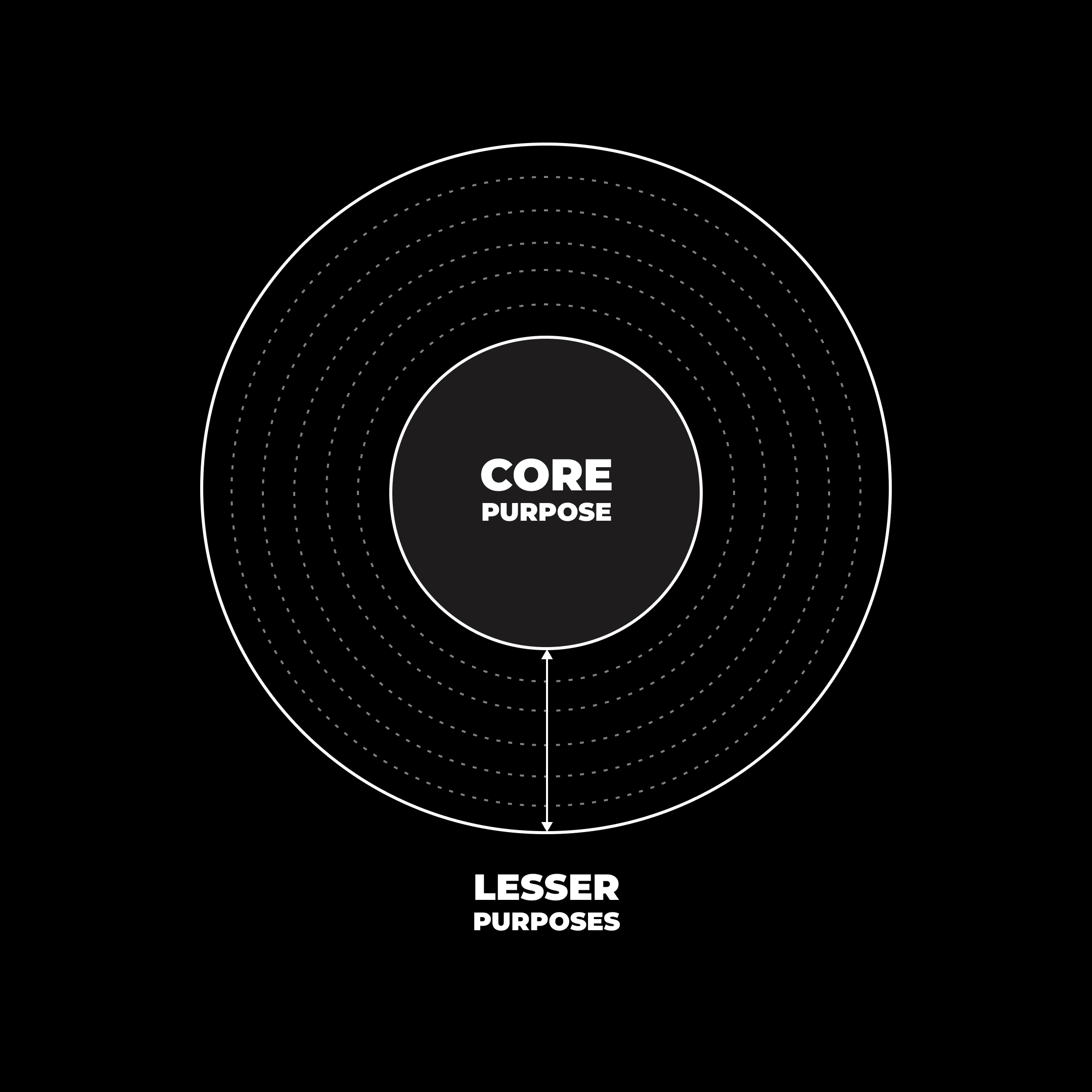
Each layer lived fully reveals the next.
As you open yourself to living more authentically, your deepest purpose will slowly begin to make itself known. In the meantime, you will experience layer after layer of purposes, each one getting closer and closer to the fullness of your deepest purpose.
– David Deida
You reach the higher goals by pursuing the lesser ones first.
So how do we make this practical?
By reverse-engineering your goals.
Here's how:
This is how you align your daily actions with your long-term goal.
And it aligns your actions with the things you value most.
Which will give you the most dopamine and motivation while you’re pursuing it.
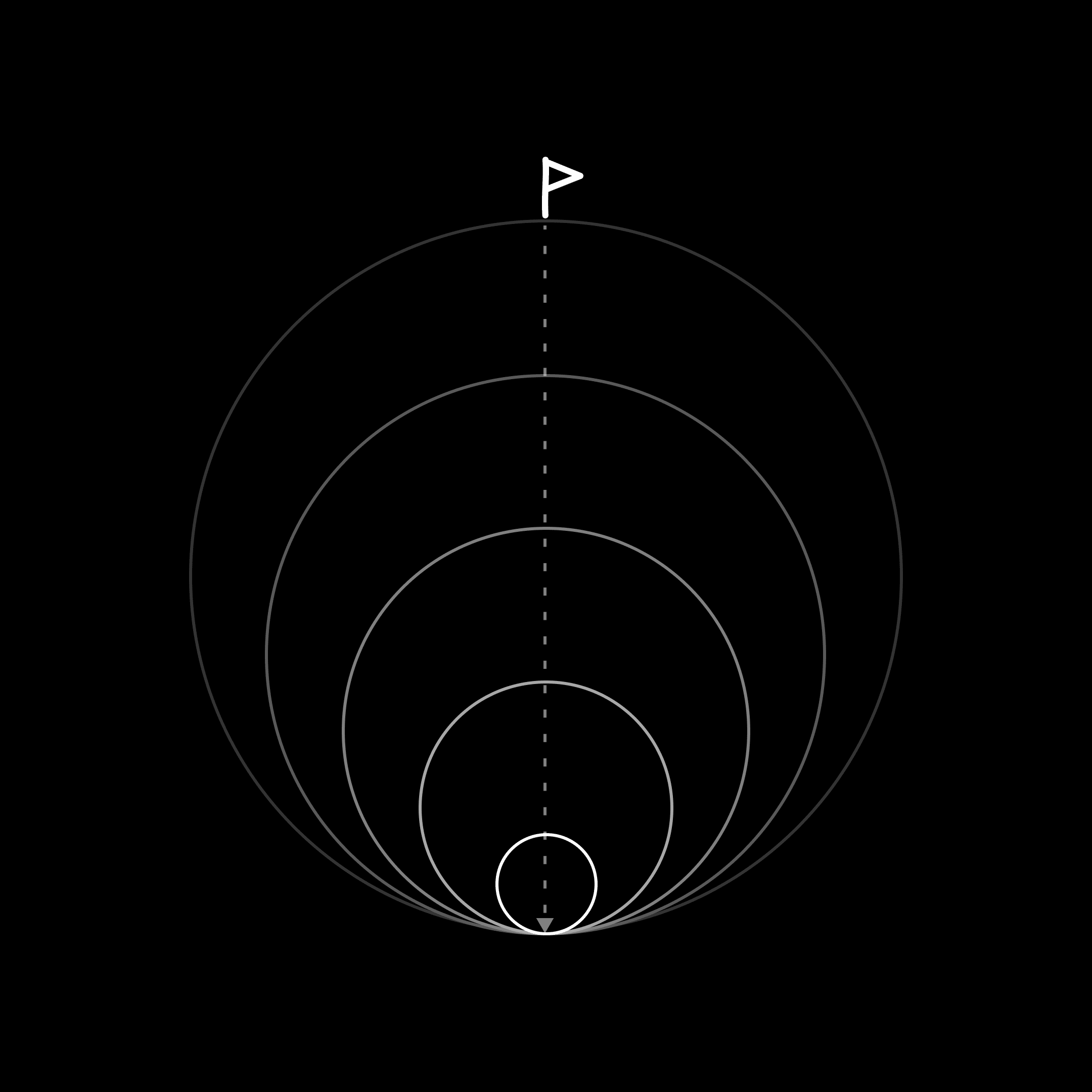
Now you know what to aim for.
Next comes the hunt.
It is not that we have a short time to live, but that we waste much of it.
– Seneca
Everyone gets the same 24 hours.
Yet some achieve far more.
Even if they have the same goals and resources.
Why?
Because they actually do what matters.
They strike like lions — with precision and intensity.
And they do it through something called Flow.
Flow is a state in which people are so involved in an activity that nothing else seems to matter; the experience is so enjoyable that people will continue to do it even at great cost, for the sheer sake of doing it.
– Mihaly Csikszentmihalyi
Flow is a mental state where work feels effortless.
You’re fully focused on one task and you become extremely productive.
To access it, you need to do a few key things:
The first step is matching the challenge to your skill.
Video games are addictive because they master this balance.
We’ll dive deeper into this in a later newsletter, but for now it's enough to understand that they always give you a challenge just beyond your current skill level.
If it's too hard, and you feel anxious.
If it's too easy, and you feel bored.
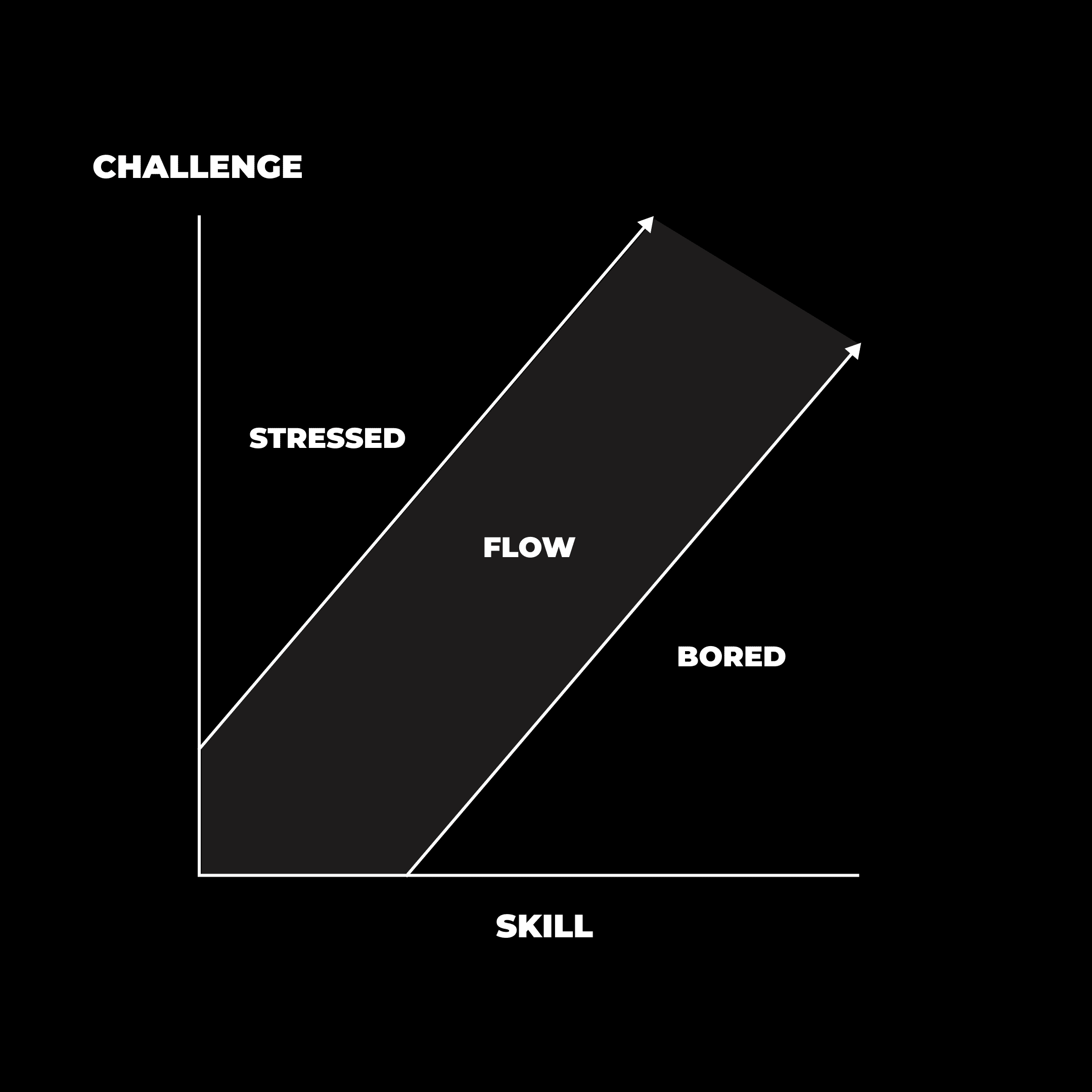
A level 1 player can’t handle a level 100 challenge.
A level 100 player won’t enjoy a level 1 challenge.
Flow follows focus, and focus follows challenge. The ideal challenge point is about 4 percent greater than the skills we bring to the task.
– Steven Kotler
So pick a challenge just above your current level.
In the gym, you add a few pounds to get stronger.
In work, you add a bit of difficulty to get more skilled.
Think about it as progressively overloading your skill level.
If you’re at level 5, take on a level 6 challenge.
It’s high enough to motivate you but low enough to achieve.
That balance triggers flow.
And flow drives progress.
The next step is what I call Attention Design.
This is about designing your work environment for maximum focus.
It comes down to two rules:
I don’t know what your room looks like, but here’s what works for me:
The more of these you apply, the easier focus becomes.
It works well for me so I can highly recommend trying it out.
At this point, you know your goal, you picked the right challenge level, and you created the right work environment.
Now comes the hard part — actually sitting down to do the work.
And for that, there’s one key concept you need to understand.
Activation energy is the initial effort it take to start a task before it becomes easier or enjoyable.
It’s like the spark that starts a fire.
It is not always easy to enter flow. Most enjoyable activities require an initial investment of attention before they begin to be enjoyable.
– Mihaly Csikszentmihalyi
Once you’re in flow, work feels effortless.
But getting into flow takes effort.
You need to push through the resistance first.
Most people never do this it.
They get distracted, multitask, or quit too soon — and every time they switch tasks, the flow resets.
After an interruption, it takes an average of 23 minutes and 15 seconds to return to the original task.
– Gloria Mark
This is why Attention Design matters.
It helps you to focus long enough on one thing to overcome the struggle so that you get into flow state.
Struggle is a loading phase. We’re loading, then overloading … If you don’t have the energy to fight, you can’t get into flow.
– Steven Kotler
Just as everything, it's a skill you can train.
At first, it’s hard to push through the struggle phase.
But the more you practice, the easier it becomes.
It also becomes easier if you actually care about what you do.
Purpose provides activation energy for living.
– Mihaly Csikszentmihalyi
To build activation energy and move through struggle:
Repeat this process, and you’ll enter flow more often.
That’s how you hunt like a lion.
Flow is powerful, but it comes at a cost.
Without proper recovery, it will drain you over time.
So that brings us to the third phase: Rest.
After flow, you have to recover. Flow is a high-energy state — it’s neurochemically expensive. Without recovery, you build allostatic load — the body’s stress systems stay activated, performance drops, and burnout follows.
– Steven Kotler
You need to take time to recover after flow.
But recovery often gets misunderstood.
Most people think recovery means relaxing.
But relaxing ≠ recovering.
Relaxation is passive — it feels good but doesn’t always restore you.
Recovery is active — it can feel hard but it actually recharges your body and brain.
That’s why you can “rest” all weekend and still feel drained.
You need Active Recovery.
Active recovery is any deliberate, low-intensity activity that helps the body and brain return to baseline after high performance.
– Steven Kotler
Active recovery doesn’t always feel good during, but it makes you feel much better after.
It clears stress, resets your nervous system, and prevents burnout.
Here’s a list of the most important active recovery methods:
Also: eat well, exercise regularly, and move daily.
These habits help you to fully recover.
You don’t need to do them all but the more you do, the better you’ll feel.
Pick the ones you enjoy most and make them part of your routine.
For optimal recovery:
This keeps your body and mind in balance.
Plan. Work. Recover. Repeat.
Work with 100% intensity.
Rest with 100% intensity.
Never half-work like a cow.
Work — and rest — like a lion to get ahead of 99% of people.
This is how you blow past the competition by working less.
Talk to you soon my friend,
Stijn Noorman
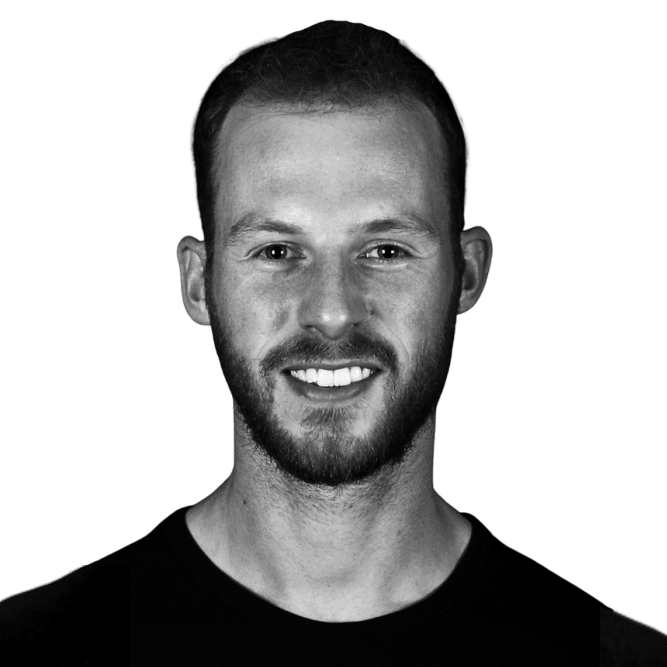
I'm a writer and brand advisor for creators and entrepreneurs. I talk about writing, self-improvement, and one-person businesses.
Join 6200+ readers of my free weekly newsletter to learn how you can get paid to write about your interests online.